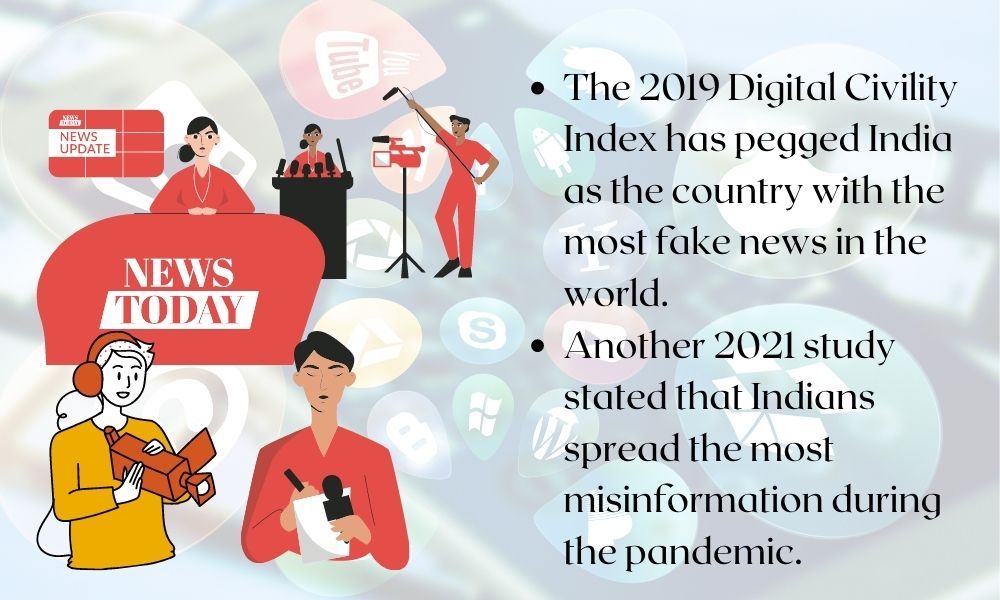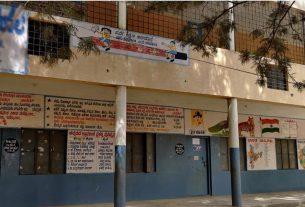Media literacy is still an additional workshop in Indian schools and a touchy topic in Indian homes—teachers, media experts and sociologists say that this needs to change.
Bengaluru: It is 2 p.m., an hour after lunch break. As *Ishita looks out of her classroom window, she sees the gloomy grey clouds fill Bengaluru’s skies. She looks down at her textbook—the teacher calls her name and asks her to define ‘war’. She starts to define it and midway, she asks her teacher if they can learn about Ukraine. The teacher shoots her an angry glance and tells her she is being ‘disobedient’. Ishita wonders what she did as she walks out of class.
While schools emphasize traditional subjects such as math, science, and history, students and teachers in Karnataka lament the ignorance towards media literacy and current affairs education.
“This is the problem with our schools. They teach Math, Science, and definitions like there are no other subjects. With an old, one-sided curriculum, children are not media literate—if they don’t know what is happening in the world, how can they survive in it?” said *Mary, a history teacher at a Bengaluru school.

The New Educational Policy 2020 (NEP) emphasizes aspects like foundational literacy and non-formal modes of teaching. NEP aims to achieve foundational literacy for Grade 3 by 2025. For instance, a part of ‘foundational literacy’ focuses on the Central Board of Secondary Education (CBSE) reading mission. In collaboration with publisher Pratham Books, this mission allows teachers to access digital libraries so they can facilitate and impart knowledge. NEP also introduced a new mass media syllabus for Grade 11 and 12 CBSE students—it includes an introduction to mass media and the understanding of the technical process involved in different types of media.
But students say that the syllabus is not very helpful. “We have definitions of media, plot, narration, etc. But we do not really talk about current affairs. Teachers are very touchy about topics like politics and religion. But isn’t it important to learn about it?” *Sharanya, a Grade 12 student in a Bengaluru school said.
She added that she does not learn technical skills. “We do not learn things like Photoshop or Premiere Pro. We learn about mass media but we don’t really learn how to do things.”

But Mary explained that teachers find it hard to wrestle with an old system. “We still have textbooks from five years ago. Teachers also lose hope after a point of time because they don’t get a say in what they can teach.”
Media educators have been trying to underline the importance of media literacy in schools for a few years—they have taken it into their hands to facilitate this practice for children.
“Teachers are often overworked and underpaid—this affects their facilitation towards new modes of teaching—when we spoke to them about imparting current affairs knowledge, they said ‘That is an extra workload for us’ and that is a bottleneck of sorts,” said Ritika Kumar, co-founder of The Young Chronicle, a children’s news app which uses interactive features and Virtual Reality (VR) to deliver news and other facts to children.
Ritika added that foundational literacy must start with reading. “Read, read, read—that is what The Young Chronicle tries to inculcate in children. Reading develops critical thinking. We hope that schools will see the benefits of this and adopt our way of educating.”
Nidhi Arora is the founder of The Children’s Post of India, the first print at home daily for children in India. It consists of news, general knowledge (GK) and puzzles among other elements. She said, “Apart from reading to increase media literacy, schools should focus on the news—but they need to talk about awareness, understand all sides of the situation. They need to teach children how to do an impartial analysis of the issue.”
A senior educator from CBSE said that children are being made to inculcate the habit of reading through their school magazines. “They contribute to it and write about their school and activities. They also draw and contribute anecdotes. Earlier this used to be an annual magazine, but now, we will make it a quarterly magazine,”
Mary added that the school temporarily had a media literacy programme but discontinued it during Covid. “It was so fragmented. It was almost like they did it as a chore to go according to a policy.”
Mary added that the problem also lies with a child’s lack of interest. “My son doesn’t like to digest news in a boring way. But the smartboards don’t even work in the school. I want children to be media literate, but how?”
The Times of India has a children’s newspaper ‘News in Education’ (NiE). Started in 1985, NiE now has a print and online version that circulates to 2,000 schools in India.
“I think that was a great initiative—but children just do not read because they have been tuned to care about something only when it counts for marks. News isn’t compulsory and that is the issue. Before they are even born, they hear the word ‘board exam’,” Smitha, a science teacher said.
Children say they want to learn about the world in an interactive manner. “Some of my classmates get bored. But I like to read. Maybe they can show us videos?” Ishita asked.
She added that the school system emphasizes a few subjects more than the others. “I wish they did not make us think only marks are important. I heard about children in Ukraine and what they feel. Is that not important to learn in school?”

Media educators believe parents can sometimes impose their values on children. “They are polarized in their own way sometimes. But as they slowly start to read, they may be able to educate their children better,” Ritika said.
Some parents feel that they do not want to expose their children to the real world. “Why should I tell my child about such bad things? I will only have to deal with the nightmares when my child wakes up crying. Let her play and learn Math. That is enough,” *Lakshmi said. Her daughter is a Grade 3 student.
However, media educators believe that there are better ways to teach a child. “The worst is when parents say, ‘When you are older we will tell you’. Stop shielding your child. If I am talking about Ukraine, I won’t tell the child how gruesomely someone was killed. I will first show the child where Ukraine is on the map and then explain in a simple manner,” Ritika said.
Sociologists say that media literacy is essential to thrive in society. “Have we ever heard of a school where ‘Math’ is optional? That would be quite startling, would it not? Parents may not even admit their child into such a school. But even if there is no ‘Media’ subject in school, it doesn’t seem out of the normal,” R. Mir, a sociologist said.
He added that not exposing children to the real world can have a generational impact. “Look at people today. They blindly believe anything they hear, because they do not know the context and reality, and so do not know how to critically decode the matter. And they pass that on to their children and grandchildren and so on.”
In 2019, Microsoft released a survey on Safer Internet Day called ‘Digital Civility Index’. This survey found that India took the seventh place out of 22 countries—it has more fake news than any other country in the world. A study called ‘Prevalence and source analysis of COVID-19 misinformation of 138 countries’ found that India took first place for producing the most misinformation during the Covid-19 pandemic.
Members of the education industry say that schools can facilitate, but parents need to pave the way forward.
Dr. Raju TN, member of the Karnataka NEP Task Force, said, “I think that children are very young to understand tough subjects. But I feel that media can be used to educate children to make them better citizens.
“The problem is that parents themselves do not read news. How can we introduce a mechanism to educate them? I think that media literacy should start at home. Then school-level facilitation will be truly impactful.”




